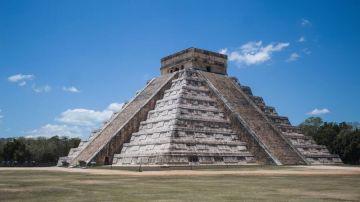Ancient Mayan City Uncovered in Mexican Jungle
Mayan sites are common in Mexico including Chichen Itza, Tulum, Yaxchilan and now we can add a new site that was recently found by archaeologists

Photo: Pexels/ Omar Zetina
Mayan sites are common in Mexico including Chichen Itza, Tulum, Yaxchilan and now we can add a new site that was recently found by archaeologists. An ancient Mayan city was discovered in the central region of the Mexican state of Campeche, an area covered by miles of jungle and wetlands, Reuters reported. The city, which has been estimated to have been an important center from the years 250 to 1000 AD, has been named “Ocomtún,” (stone column) in the Yucatec Maya language, because of its stone features. It was discovered through the collaborative efforts of the Archeology Council of the National Institute of Anthropology and History (INAH), the Secretariat of Culture of the Government of Mexico, the University of Houston’s National Center for Airborne Laser Mapping, and the Research Center of the Slovenian Academy of Sciences and Arts. It was part of a larger project from the INAH known as “Broadening the Archaeological Panorama of the Central Maya Lowlands,” according to a press release from the institute.
The Mayans reigned in the areas that are now southeastern Mexico, Guatemala, Belize, and the western areas of El Salvador and Honduras for more than 3,000 years until Spanish colonization.
The University of Houston’s National Center for Airborne Laser Mapping played a large part in the expedition, contributing a method of laser mapping and surveying called LiDAR, or light detection and ranging, to scan the area for evidence of ancient sites beneath the trees. The search took two months to complete. Using their images, archeologists were able to uncover relics from thousands of years ago, many of which are sacred and religious sites, including large pyramids, stone columns, plazas, a ball field, and altars. Many of the pyramids were measured to be almost 50 feet tall and the columns may have served as entrances to the upper floors of their buildings. The ball field was likely a site for people to play a popular ball game where people passed a ball, representing the sun, across the court and into a stone hoop without using their hands.
Based on what the institute found, archeologists estimate that Ocomtún might have collapsed anywhere from 800 to 1000 A.D., centuries before Spanish conquest in the 17th century. During that time, millions of Indigenous groups were either wiped or enslaved by the Spanish, leading to a history and system of inequity and discrimination that is still felt today. It’s more important than ever then that we preserve and learn about Indigenous history pre-colonization through what they left behind.

















